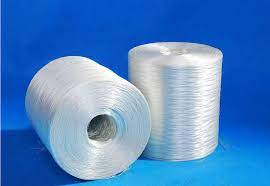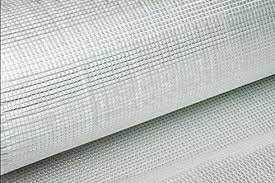Uses and characteristics of glass fiber

Glass fibers are generally classified according to glass raw material composition, filament diameter, fiber characteristics, fiber appearance, and so on. Glass fiber includes twisted roving, direct roving, chopped strand, non-twisted roving, glass fiber mat, friction material, continuous glass fiber, etc.
1. Composition classification of glass raw materials: generally distinguished by different alkali metal oxide content
(1) Alkali-free fiber (commonly known as E glass): R2O content is less than 0.8%, which is an aluminoborosilicate component. Its chemical stability, electrical insulation properties and strength are all very good. Mainly used as electrical insulation material, glass fiber reinforced plastic reinforcement material and tire cord.
(2) Medium alkali fiber: The content of R2O is 11.9%-16.4%, which is a sodium-calcium silicate component. Because of its high alkali content, it cannot be used as an electrical insulating material, but its chemical stability and strength are still good. Generally used as latex cloth, grid cloth base material, acid filter cloth, window screen base material, etc.
(2) High alkali fiber: glass component with R2O content equal to or greater than 15%. Such as glass fiber drawn from broken flat glass, broken bottle glass, etc. as raw materials. It can be used as a waterproof and moisture-proof material such as storage battery isolation sheet, pipe wrapping cloth and felt sheet.
The thinner fiber made of molten glass has good insulation, heat resistance, corrosion resistance and high mechanical strength. It is used as a raw material for insulating materials and glass fiber reinforced plastics.
Glass fiber is an inorganic non-metallic material with excellent performance. The original English name is glass fiber or fiberglass. The components are silica, alumina, calcium oxide, boron oxide, magnesium oxide, sodium oxide, etc. It is made of glass balls or Waste glass is used as raw material to undergo high-temperature melting, drawing, winding, weaving and other processes. After that, various products are formed. The diameter of glass fiber monofilament ranges from a few microns to more than 20 meters, which is equivalent to 1 hair strand. /20-1/5, each fiber strand consists of hundreds or even thousands of monofilaments, which are usually used as reinforcement materials in composite materials, electrical insulation materials and thermal insulation materials, circuit substrates, etc., and are widely used in the country All sectors of the economy.
The glass rope twisted with glass fiber can be said to be "very good in the rope." A glass rope as thick as a finger can actually lift a truck full of cargo! Because the glass rope is not afraid of seawater corrosion, it will not grow. It is rusty, so it is suitable for ship ropes and crane ropes. Although synthetic fiber ropes are strong, they will melt at high temperatures, while glass ropes are not afraid. Therefore, the use of glass ropes for rescuers is particularly safe.
Glass fiber can be processed to weave a variety of glass fabrics-glass cloth. Glass cloth is not afraid of acid or alkali, so it is ideal for use as a filter cloth in chemical factories. In recent years, many factories have adopted glass. Cloth replaces cotton cloth and sack cloth to make packaging bags. This kind of bag is not moldy or rotten, is moisture-proof and corrosion-resistant, and is durable. It is very popular and can save a lot of cotton and linen. Large glass wall cloth with exquisite patterns , Use adhesive to paste on the wall, it is beautiful and generous, eliminating the need for painting and maintenance.If it is dirty, just wipe it with a cloth, and the wall will immediately become clean again.
Glass fiber is both insulating and heat-resistant, so it is a very excellent insulating material. At present, most of our country's motor and electrical appliances factories have used a large number of glass fibers as insulating materials. A 6000-kilowatt steam turbine generator uses glass fiber The number of insulating parts made has reached more than 1,800! Because of the use of glass fiber as the insulating material, it not only improves the performance of the motor, but also reduces the size of the motor, and also reduces the cost of the motor. It really kills three birds with one stone.
Another important use of glass fiber is to cooperate with plastics to make various glass fiber composite materials. For example, immersing layers of glass cloth in hot-melt plastic, and pressing and forming it becomes the famous "fiberglass". FRP is even tougher than steel, neither rusting nor corrosion resistant, and its weight is only one-fourth of the same volume of steel. Therefore, using it to make the shells of ships, cars, trains and machine parts can not only save a lot of money It also reduces the weight of the car and the ship itself, which greatly increases the effective load. Since it will not rust, it can save a lot of maintenance costs.
If the glass is melted, it is blown into thin and short fibers with a high-speed airflow or flame, which becomes glass wool. There is a kind of moisture-proof ultra-fine glass wool, more than 200 pieces together are only as thick as a hair. Glass wool has strong thermal insulation properties, 3 cm thick glass wool, its thermal insulation capacity is equivalent to 1 meter thick brick wall! The sound absorption effect of glass wool is also very good. Therefore, it is used as thermal insulation in many industrial sectors, Materials such as sound insulation, heat insulation, shockproof and filtration.
Glass fiber
e glass fiber properties pdf
glass fiber中文
Carbon fiber
c-glass fiber properties
Fiberglass
s-glass fiber properties
application of glass fiber
所有评论仅代表网友意见
